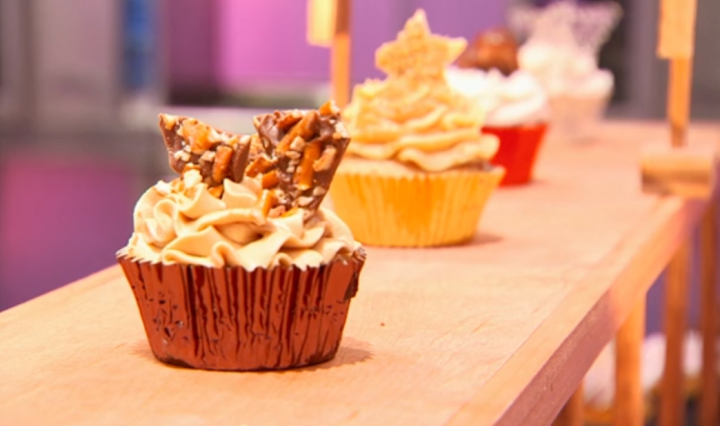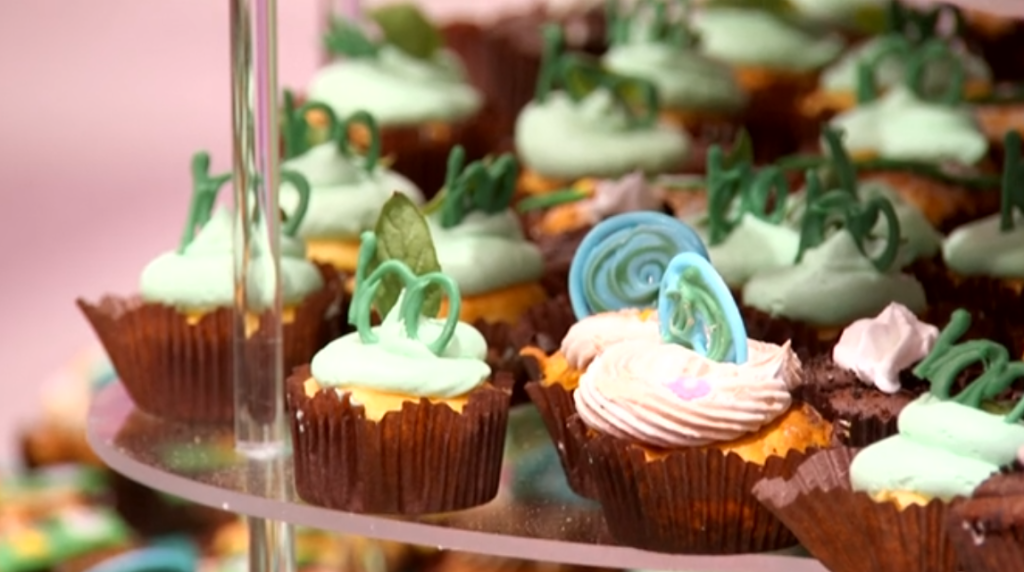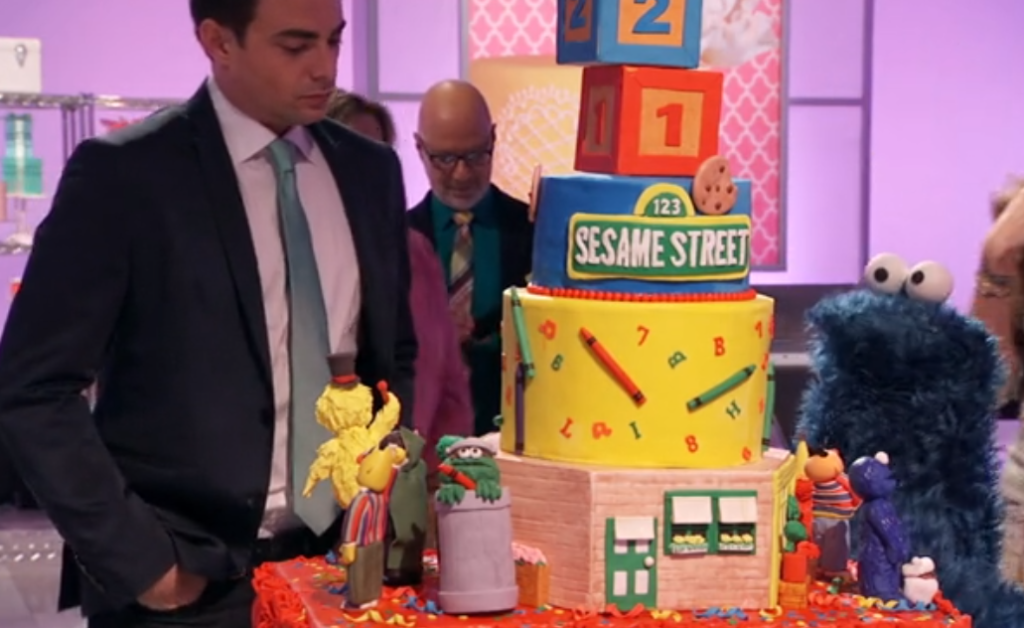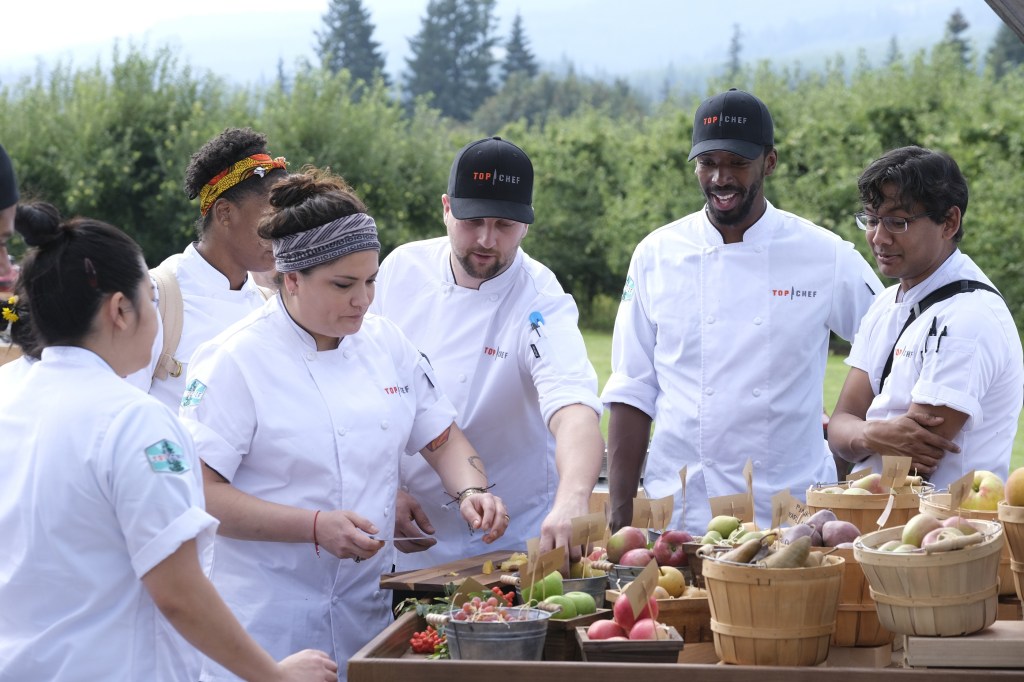
Here’s what happens to the extra food in cooking competition shows
Share Now on:
Here’s what happens to the extra food in cooking competition shows

This is just one of the stories from our “I’ve Always Wondered” series, where we tackle all of your questions about the world of business, no matter how big or small. Ever wondered if recycling is worth it? Or how store brands stack up against name brands? Check out more from the series here.
Listeners Nina Yari and her daughter Niloofar Yari from Dallas asked:
What happens to the extra food they make in baking/cooking competitions when the show is over and who pays for it? For instance, two to four competitors can make 50 or 100 cupcakes each — are they sold? Given to charity? Do the programs have specific suppliers?
By the end of each episode of “Cupcake Wars,” contestants baked hundreds of decadent cupcakes, while on “Cake Wars,” they constructed towering cakes with perfectly crafted fondant icing.
Crew members often get to eat the creations that contestants make, according to Melissa Johnson, a senior challenge producer who’s worked on both of these Food Network shows, along with Netflix’s “Sugar Rush” and “Nailed It!”
But there are exceptions. “In the case of ‘Nailed It!’ that might be considered an act of hostility toward our crew if we were to try to give those creations to them to try,” Johnson said, laughing.

“Bless their hearts, because they’re all very nice people,” she said, referring to the contestants. “But they are there because they don’t know how to bake very well.”
The very premise of the show, which premiered in 2018 and launched its latest season last month, revolves around amateur bakers attempting to re-create complicated cakes and cookies.
Johnson said that truthfully, the food that’s baked or cooked on these reality shows often gets thrown away.
“We can’t donate any of them, and that is a bummer,” she noted. “There are really strict rules in place, for a good reason, when it comes to food donation.”
However, she said anything that’s still in its factory packaging that hasn’t been opened can be, and often is, donated locally.
“And then the extra things that can’t be donated are put up for grabs to the crew, which is cool — you can go home with some pretty great stuff,” Johnson said.
Some of the items she’s snagged: fancy chocolate and very high-end butter. “Just stuff I wouldn’t have even known to buy,” she said.
On shows like “Cupcake Wars,” which ran from 2009 to 2018, and “Cake Wars,” which ran from 2015 to 2017, the winner’s confections were displayed at special events. They included the Girl Scouts’ 100th birthday and parties celebrating “Sesame Street” and the Super Mario Bros. game franchise.

So did the contestants have to remake their handiwork for these events?
With “Cake Wars,” bakers were allowed to keep certain parts of their creations intact (like fondant decorations that wouldn’t be eaten), but remade the cake portions, according to Johnson.
However, she added, sometimes the baking and the event happened at the same time.
As for the shows’ suppliers, Johnson said they can vary from season to season, but the list of companies she’s worked with includes Nielsen Massey, which provided vanilla products; Callebaut chocolate; Guittard chocolate; Happy Egg; Satin Ice, for fondant; Challenge Dairy; and Hot Hands, a modeling-chocolate company.

Sometimes shows have relationships with specific charities. A spokesperson for Fox Entertainment said that with “MasterChef,” all remaining food is donated to MEND, a Los Angeles organization that provides food, clothing and support services to low-income individuals and families.
“We do weekly donations with them and one large donation at the end of the season,” the spokesperson said over email.
In the case of “Top Chef,” which is in its 18th season, each meal is cooked specifically for a diner or a judge, explained Sandee Birdsong, the senior culinary producer on the show and co-executive producer at Magical Elves, the show’s production company. (“Top Chef” currently airs Thursdays at 8 p.m. EDT/PDT on Bravo.)
“So we don’t waste that food,” said Birdsong, who was a contestant on “Top Chef: Miami.” “If they have to make 10 plates, they’re going to 10 diners.”

She said that when the chefs are in the kitchen and take out items they end up not using, those products may get put back in the freezer or refrigerator or on the shelves, so that, hopefully, the chefs can use them in a future challenge. The crew also sometimes gets the opportunity to take leftover items.
But if an item has been compromised, it’s tossed. “There’s very minimal of that,” she noted.
And at the end of each challenge, items the show doesn’t see a need for anymore are donated to missions, shelters or food banks.
Throughout its run, the show has been set in cities across the United States, featuring New Orleans, Seattle, Chicago; Charleston, South Carolina; and, in its current season, Portland, Oregon.
There are locals who work for the show in different cities, and the show offers food to them and their families.
“We give away whole fish and lobster and filet,” Birdsong said. “Everything goes.”
By the end of the most recent season, “Top Chef” had donated 5,000 pounds of food to Union Gospel Mission Portland, which fed about 6,000 people.
For viewers, it’s clear where contestants often get their groceries from, since the show puts up a shot of a Whole Foods storefront when they go shopping.
But the grocery chain doesn’t supply everything. Whenever it lands in a new location, the show likes to source local and meets with farmers and other food purveyors.
“We worked with the local fisheries out in Portland and the crabbers and different oyster and clam people,” Birdsong said. “That’s the fun part about it. And we get to go into the city and see what it really offers culinarywise.”
Cooking reality shows are launching new seasons amid an unprecedented global pandemic. Culinary content took on a new resonance in the past year, as more people stayed home and attempted to improve their kitchen skills. Bread cookbook sales soared, while TikTok videos on feta pasta went viral.
And during the crisis, Netflix invited people to do their own “Nailed It!” challenges at home.
“I know a lot of people who have tried to make these things on their own, and it’s just fun,” Johnson said.
She’s disappointed that every last bit of food on some of these shows can’t be used or eaten.
“But at the same time, I’m happy that we can inspire people,” Johnson said. “What I love about shows like that is it just proves that you don’t have to be an expert. You don’t have to be amazing at it. Anybody can try it.”
There’s a lot happening in the world. Through it all, Marketplace is here for you.
You rely on Marketplace to break down the world’s events and tell you how it affects you in a fact-based, approachable way. We rely on your financial support to keep making that possible.
Your donation today powers the independent journalism that you rely on. For just $5/month, you can help sustain Marketplace so we can keep reporting on the things that matter to you.


















